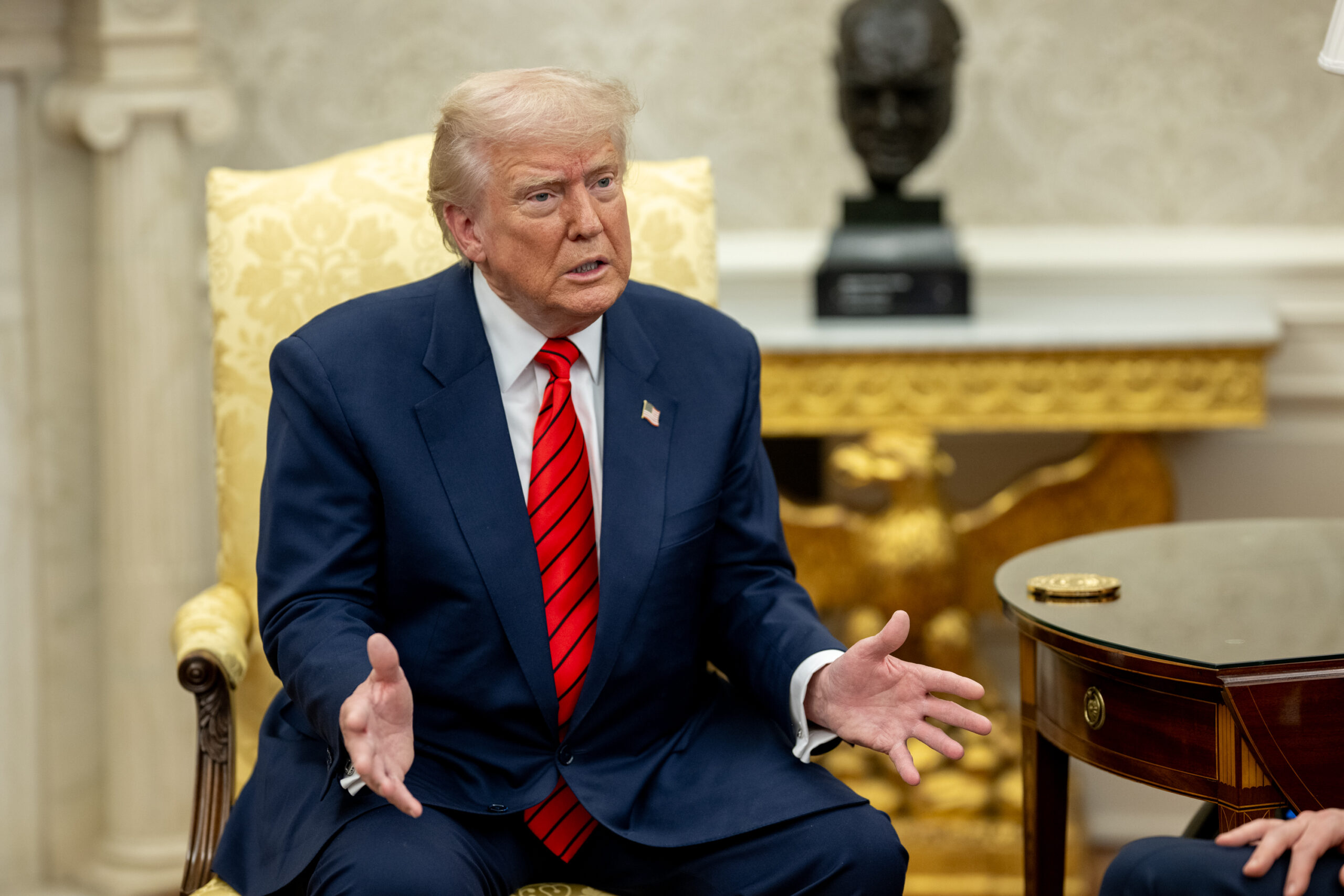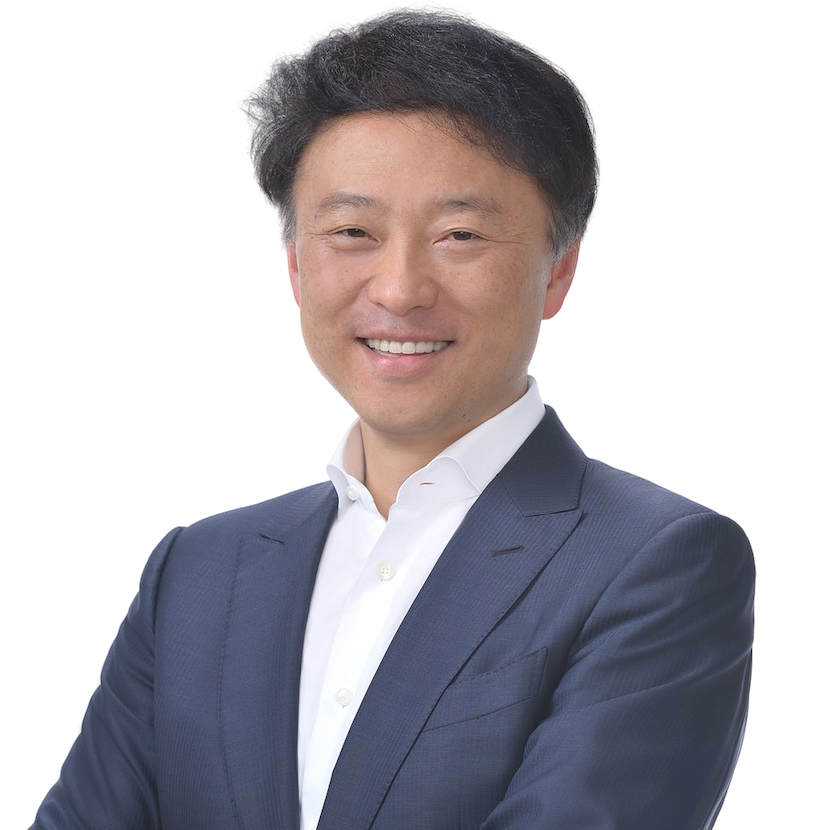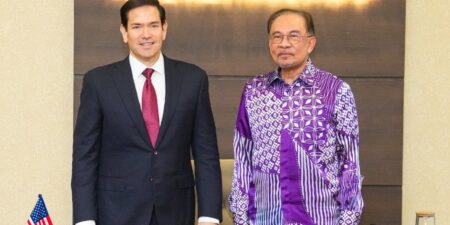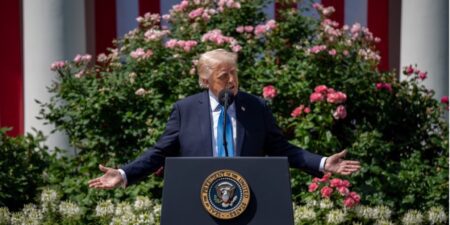
Navigating Trump’s America First Trade Policy: Strategic Responses From Key Markets in the Indo-Pacific

The Indo-Pacific is witnessing a range of strategic responses to U.S. President Donald Trump’s America First Trade Policy and Fair and Reciprocal Plan on trade as countries navigate the complexities of the new administration’s tariffs and trade measures. Some countries are actively seeking to mitigate the impact of tariffs and trade measures by deepening regional trade relationships, advocating for exemptions and considering anti-dumping measures. Others have taken more of a conciliatory approach by reducing tariffs on U.S. exports and enhancing bilateral trade agreements to foster deeper economic ties with the United States. Indo-Pacific countries are also increasing investments and imports from the United States to address trade challenges while diversifying their trade relations to minimize risks.
This report includes analysis from BGA’s experts in the Indo-Pacific, providing valuable insights into the decisions and strategies various countries are adopting in response to Trump’s trade policies. Each section analyzes how a particular country is navigating the challenges posed by U.S. tariffs and trade measures, highlighting the proactive measures its leaders are taking to mitigate the impact of these policies and ensure that their country and the region remains economically stable and resilient.
Australia

Tariffs on steel and aluminum exports, and the potential for tariffs on agriculture and pharmaceuticals, have strengthened the government’s resolve to deepen its trading relationships in the Indo-Pacific. Although the government will continue to advocate for exemptions and leverage Australia’s critical minerals, it will not impose retaliatory tariffs against the United States and may consider anti-dumping measures against other steel and aluminum producers.
Prime Minister Anthony Albanese has described the tariffs as “against the spirit of our two nations’ enduring friendship,” and Resources Minister Madeleine King has pointed to demand from other nations for critical minerals. Australian Trade Minister Don Farrell spoke with U.S. Commerce Secretary Howard Lutnick March 14, expressing disappointment on failing to win an exemption on steel and aluminum tariffs. He also discussed the threat of additional tariffs, which could take effect April 2. Canberra is under pressure from Washington to soften its approach to tech regulation and boost defense spending.
China

China has been at the forefront of the Trump administration’s target list for trade measures. These include an additional 10 percent tariff on Chinese imports, bringing the total to 20 percent March 4, and a 25 percent tariff on all steel and aluminum imports, set to start April 2, with China included. Experts anticipate more measures from the United States in the near future.
In addition to the expanded export controls on critical minerals to the U.S. earlier this year, China responded firmly March 10 by announcing up to 15 percent tariffs on U.S. farm goods and adding 15 U.S. companies to its export control list. The Ministry of Foreign Affairs said it would “fight until the end” if the United States insists on a tariff or trade war. Foreign Minister Wang Yi criticized the U.S. tariffs on Chinese goods, questioning what they have achieved with tariffs. Additionally, Spokesperson Mao Ning condemned the Washington for violating World Trade Organization rules and vowed to take “all necessary measures” to protect China’s rights and interests.
Nevertheless, analysts suggest that Beijing is leaving room for negotiations with Washington, opting for measured retaliation despite the harsh rhetoric. Meanwhile, China is expanding its influence beyond the United States. This includes more engagements with Global South countries through Belt and Road Initiative projects and offering tariff-free treatments. China is also bolstering trade relations with individual European countries such Germany, Italy and the United Kingdom, particularly in the electric vehicle sector.
India

India has taken proactive steps to mitigate a potential tariff war with the United States through high-level diplomatic visits and preemptive tariff reductions on U.S. exports, including automobiles and bourbon. During Prime Minister Narendra Modi’s February 13 visit to Washington, the two governments agreed to finalize a trade agreement by fall 2025 and increase bilateral trade to $500 billion by 2030, from about $200 billion in 2024. India’s Minister for Commerce and Industry Piyush Goyal visited the United States in early March to kick-start negotiations and is expected to visit again soon with a revised list of tariff reductions to moderate the impact of reciprocal tariffs.
The energy and defense sectors represent aligned interests for both economies to reduce the $45.7 billion trade deficit. India’s oil and gas purchases from the United States could grow from $15 billion to $25 billion annually, with India seeking more natural gas imports in particular. Additionally, the renewal of a 10-year defense partnership framework will likely enhance defense trade ties through technology transfers and maintenance.
Indonesia

President Prabowo Subianto appears unconcerned about Trump’s trade measures taking aim at Indonesia. Neither he nor senior officials have publicly addressed their potential enactment of mitigation plans. Nonetheless, BGA expects a conciliatory stance if such measures are imposed, given Prabowo’s consistently amicable foreign policy.
Indonesian officials dismiss the country — the United States’ 15th largest trade surplus partner at $17.9 billion in 2024 — as a primary target. Many believe ties from Trump’s first term, such as through Luhut Pandjaitan, will insulate against sudden shifts. Some even see Trump’s return as an opportunity to attract investment or secure a critical minerals deal, however slim. Regardless of validity, these views shape government thinking.
The chief concern is not direct U.S. action but the impact of a trade war on demand from China, Indonesia’s largest export market. Some technical officials caution that Washington could pressure Jakarta via the Generalized System of Preferences (stalled in the U.S. Congress since 2020) for greater access to U.S. goods, but entrenched policies like local content requirements make major concessions unlikely.
Japan

Japan’s Minister of Economy, Trade and Industry Yoji Muto met with U.S. Commerce Secretary Lutnick, Trade Representative Jamieson Greer and Director of the National Economic Council Kevin Hassett March 10, mainly to seek exemption from the 25 percent tariffs on imported steel, aluminum and automobiles. He did not obtain assurance of exemptions; however, the two sides agreed to cooperate closely on economic ties.
In the meeting with the U.S. counterparts, the representatives emphasized the importance of “reciprocity,” such as balanced tariff rates, and emphasized Japan’s policy of revitalizing domestic manufacturing. Although the trade-weighted average tariff rate for the United States is 2.2 percent, while Japan’s is 1.9 percent, the Trump administration stressed the need to address nontariff barriers to achieve fair and balanced trade relations with Japan.
In a press conference after the meeting, Chief Cabinet Secretary Yoshimasa Hayashi said, “the U.S. side recognized the importance of its relationship with Japan and acknowledged the significance of Japanese investment and job creation. It has not been confirmed whether Japan will be exempt from the tariff measures, but bilateral discussions will continue with details being coordinated at the working level. Both sides agreed to establish a working level consultation framework, and Japan conveyed its plan to hold a working level discussion as early as March 17.
Japanese automakers primarily source their parts domestically within the United States, with limited imports from Mexico or Canada, making them less vulnerable to tariff hikes compared to companies like GM and Ford. If government-level negotiations resume, significant progress can be expected in areas such as increased liquefied natural gas (LNG) imports. Consequently, it is unlikely that U.S.-Japan economic relations will significantly deteriorate.
Korea

Korean companies have invested in the United States $27.9 billion in 2021, $29.4 billion in 2022 and $27.7 billion in 2023. Korean automobile manufacturers produced more than 700,000 cars in the United States last year, and Korean investors produces large numbers of semiconductor wafers each month in 2024. Korean companies are expected maintain output as a way to address the Trump tariff challenges going forward.
Seoul has sent its trade and industry ministers to Washington to discuss the issues with their counterparts. The consultations have been amicable and constructive. Korea is also expected to increase imports of oil and gas from the United States in the coming years to reduce Korea’s bilateral trade surplus with the United States.
Malaysia

U.S.-Malaysia relations have remained fraught, primarily over Prime Minister Anwar Ibrahim’s strong rhetoric on the Israel-Hamas conflict. As Anwar turns to China and Russia as potential economic allies, it is likely that the relationship between Putrajaya and Washington will remain tense for the foreseeable future. Malaysia has the world’s 14th-largest trade surplus with the United States, so it should expect tariffs.
Malaysia, as chair of the Association of Southeast Asian Nations (ASEAN), faces increasing pressure internally and from its regional partners to strengthen ties with the United States. ASEAN member countries have voiced dissatisfaction behind closed doors about Anwar’s approach in alienating Washington. A few members view ASEAN as a mediating platform to mitigate threats of tariffs by the United States. They believe Malaysia should be taking a more positive approach in engaging Washington.
To ease tensions, Malaysia plans to invite Trump’s administration to attend ASEAN’s East Asia Summit, which will be held later this year, to discuss trade frictions at an ASEAN level. An ASEAN-United States Special Summit is also being discussed for later this year.
However, existing sentiments continue to complicate diplomatic efforts between Putrajaya and Washington. With mounting pressure — particularly from the Foreign Affairs Ministry and his ASEAN partners — Anwar must carefully navigate U.S.-Malaysia relations while managing domestic political sensitivities.
Philippines

The relationship between the United States and the Philippines is expected to remain strong and resilient. According to Finance Secretary Ralph Recto, the economic and investment ties between both countries will endure amid the Trump administration’s tariff threats. Recto noted that the Philippines’ economic and development priorities are aligned with the foreign policy of the Trump administration.
The Philippines’ withdrawal from China’s Belt and Road Initiative also resonates with the Trump administration. The Philippine government is considering lowering tariffs on U.S.-made vehicles if a free trade agreement between the two countries is established. With the Philippines a vital strategic partner in the Indo-Pacific, the United States has exempted its military aid to the Philippines from the current pause on global foreign aid, reinforcing its defense commitment to the country.
President Ferdinand Marcos Jr. on January 30 announced his plans to meet with Trump to discuss the new U.S. polices on foreign assistance, trade, defense and security and immigration.
Singapore

Singapore is closely monitoring the impact of Trump’s tariffs on global trade and its economy. Although Singapore remains cautiously optimistic that it will not be directly targeted due to its trade surplus with the United States, its open economy remains vulnerable to global supply chain disruptions as tariffs imposed on other trading partners could impede trade and investment flows, adversely affecting Singapore’s economic stability. The Singapore government has also sought to demonstrate its commitment to global trade rules, notably through its proactive investigation into alleged fraud involving the movement of Nvidia chips, following claims that DeepSeek acquired these chips in Singapore in violation of U.S. export controls.
To mitigate risks from tariffs, Singapore has proactively diversified its trade relations, particularly through multilateral platforms like ASEAN, with the ASEAN-China free trade agreement most recently concluding upgrade negotiations in October 2024. Furthermore, Singapore is part of the world’s largest Free Trade Agreement, the Regional Comprehensive Economic Partnership and is working to finalize the ASEAN Digital Economy Framework Agreement by 2025 to facilitate cross-border trade in the digital space. Beyond multilateral efforts, Singapore is also strengthening its economic ties with partners in Latin America and Africa, such as the Pacific Alliance (Chile, Colombia, Mexico and Peru) and Mercosur (Argentina, Bolivia, Brazil, Paraguay and Uruguay).
At the same time, Singapore is looking to engage the United States sectorally, particularly in the areas of digital economy and energy. It currently has four digital economy agreements with five countries and a green economy agreement with Australia.
Taiwan

Trump announced plans on February 18 to impose a 25 percent tariff on imported cars, pharmaceuticals and semiconductors, with the potential for further increases. He said that the specific details would be released April 2.
Taiwan’s semiconductor industry has limited direct exports of chips to the United States. Most of the chips are first sent to other countries for assembly and then reexported to the United States. As a result, the impact on Taiwan’s semiconductor industry is expected to be relatively mild. The pharmaceutical sector could face more significant challenges, because nearly 40 percent of Taiwan’s pharmaceutical exports are destined for the U.S. market.
The Taiwan government is focusing on strengthening communication with Washington, emphasizing Taiwan’s role as a partner rather than a competitor. Taiwan is exploring measures such as increasing procurement (including military equipment) from the United States to balance trade and foster technological and supply chain cooperation. It is also encouraging companies to boost investment in the United States. Taiwan Semiconductor Manufacturing Company committed $65 billion to build its campus in Arizona. Taiwan is buying significant quantities of
U.S. agricultural products and zeroing in on important high-profile contracts, such as civilian aircraft from Boeing and electricity turbines from General Electric Vernova, to create favorable headlines.
Thailand

The Thai government under Prime Minister Paetongtarn Shinawatra and overseen by her father Thaksin Shinawatra is wary and anxious about the imposition of Trump tariffs. Although Thailand is a longtime U.S. treaty ally, such alliances now count little and can be counterproductive as the Trump II administration feels ripped off by them and appears intent on extracting geoeconomic retribution and trade reciprocity.
Thailand ranks 11th, with $46 billion, on the list of countries holding trade surpluses with the United States. It also bodes ill that the government recently deported 40 Uyghurs to China at Beijing’s request, betraying the opposing posture of U.S. Secretary of State Marco Rubio, who has consequently announced visa restrictions on complicit Thai officials. As the Trump tariffs gear up, the Thai government has pleaded with leading U.S. multinationals to persuade Washington to exempt Thailand. Its tilt toward China and entry into BRICS-plus grouping as a partner country are Thailand’s early bracing and hedging in response to Trump’s tariff wrath.
Thai Commerce Minister Pichai Naripthaphan was the first Southeast Asian trade minister to visit Washington since the Trump took office in January. Concurrent measures, such as promoting Thai outward investment into the United States and greater purchases of U.S. exports in agriculture and energy, are under consideration. Another mitigating factor could be Trump’s appointment of Michael DeSombre as Assistant Secretary for East Asia and the Pacific. DeSombre was the former ambassador in Bangkok under Trump I, potentially making him accessible to Thai interlocutors.
Vietnam

Vietnam was the second Southeast Asian country to send its trade minister to Washington under the new Trump administration in an effort to recalibrate trade relations and seek to keep tariffs low to avoid disrupting Vietnam’s booming exports. It had a $123.5 billion dollar trade surplus with the United States in 2024, behind only China and Mexico.
To reduce Vietnam’s trade surplus, Trade Minister Nguyen Hong Dien discussed buying more LNG, crude oil, airplanes and hi-tech products from the United States and blocking third countries facing U.S. sanctions — read China — from transshipping through Vietnam. Hanoi is also working to speed up approval for the satellite service Starlink, owned by Elon Musk, Trump’s top adviser. In addition, officials are considering buying more farm products such as beef and soybeans, which would help fill a void after China cut off agricultural exports in retaliation for Trump’s tariffs against China. Vietnam may also consider buying some U.S. military hardware to reduce surplus while working to keep good relations with China.
In a dash to avoid Trump’s promised reciprocal tariffs, the trade minister brought with him a business delegation, including trading company PetroVietnam Gas, power-generating firm PetroVietnam Power and electricity distributor EVN. The companies signed agreements valued at nearly $4.2 billion. Officials say previous agreements between Vietnamese and U.S. companies totaled $50.2 billion, and other agreements worth $36 billion are in the works.
If you have any questions or comments, please contact the individual experts who wrote each section or BGA Head of Research Murray Hiebert at mhiebert@bowergroupasia.com.
Best regards,
BowerGroupAsia

BowerGroupAsia

Subscribe to Asia Street
Insights & News


Malaysia Tariff Tracker | July 10, 2025
The BGA Malaysia Team, led by Senior Director Sadiq Noor Azlan, wrote an update to …
 Sadiq Noor Azlan
Sadiq Noor Azlan

Angola Navigates Commodity Dependence and Diversification Challenges
WHAT YOU NEED TO KNOW ON THE HORIZON Angola Market Overview and Forecast Political Climate …
 Mário Almeida
Mário Almeida

Indo-Pacific Recoils From New US Tariff Announcements
The BGA Global Trade and Economics Team, led by Managing Director Nydia Ngiow, wrote an …
 Nydia Ngiow
Nydia Ngiow
At BowerGroupAsia, we are committed to
delivering result-oriented solutions for our clients
We have proven track record of helping the world’s top companies seize opportunities and manage challenges across the dynamic Indo-Pacific region.



















